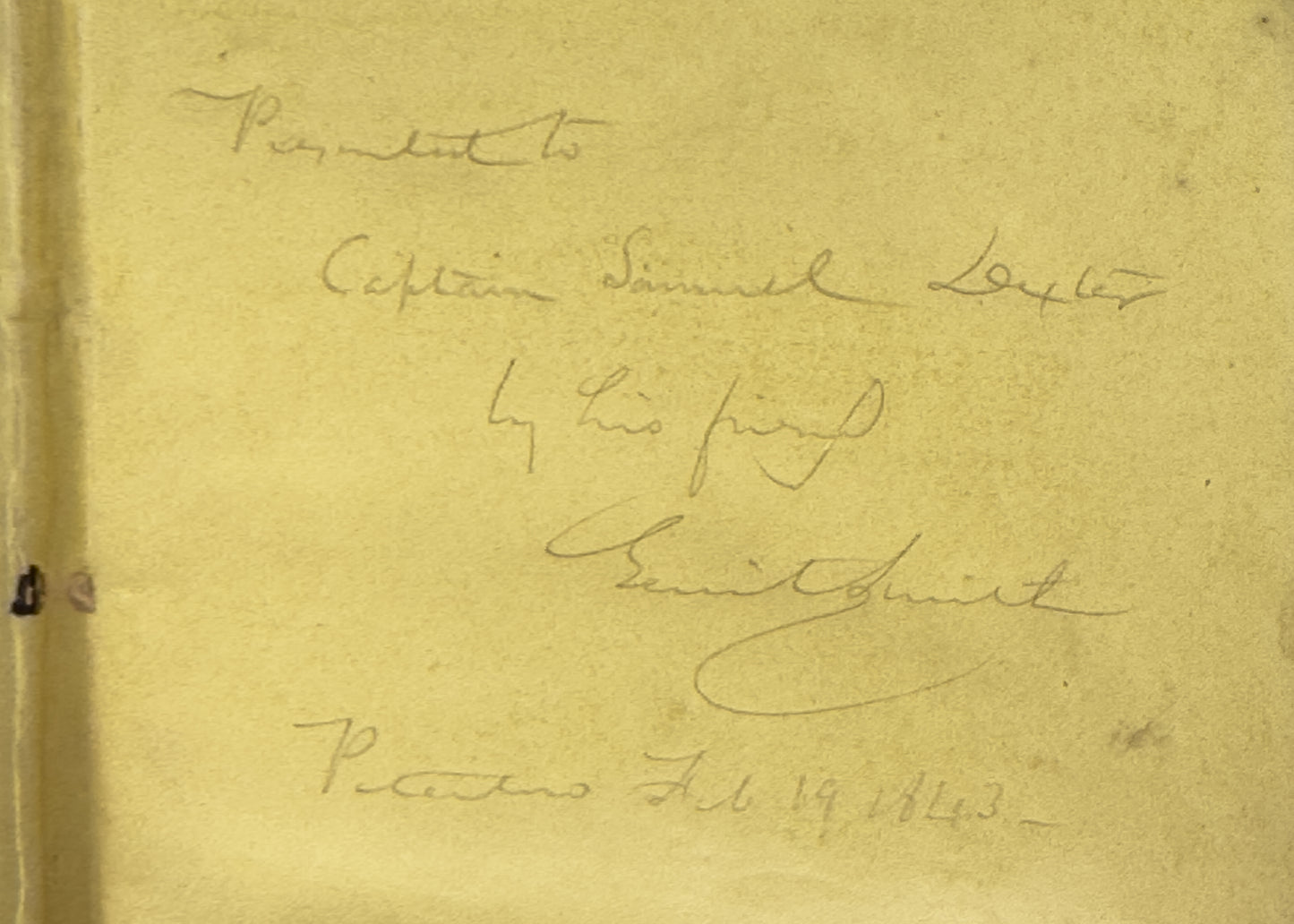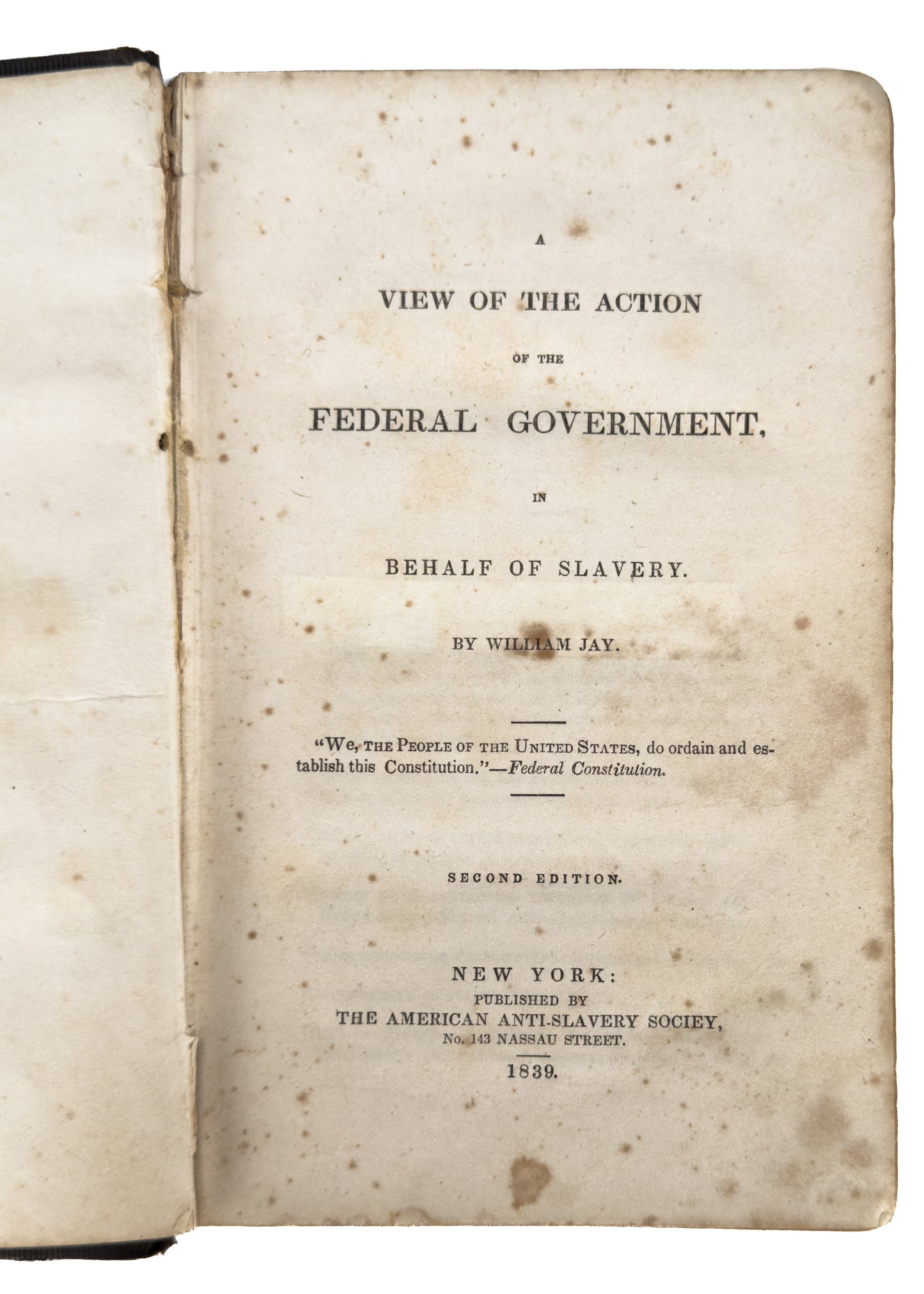Specs Fine Books
1839 WILLIAM JAY. Federal Government's Actions on Slavery - Signed Abolitionist Gerrit Smith.
1839 WILLIAM JAY. Federal Government's Actions on Slavery - Signed Abolitionist Gerrit Smith.
Couldn't load pickup availability
A superbly provenanced example of one of the most influential early abolitionists texts in America and a fascinating physical artifact that itself embodies the radicalization of abolitionists in the march toward Harper's Ferry, the Secret Six, and the Civil War.
In the early 19th century, there were various approaches to ending slavery among the abolitionists. They ranged from soft-glove enough to effectively ensure the continuation of slavery for a century to the more radical and militant views of people like John Brown, William Lloyd Garrison, etc.,
In the middle of it all, we might think of William Jay [1789-1858] as a voice of highly committed and principled discipline in the movement. The son of John Jay [1745-1829], William early became committed to the temperance, antislavery, and antiwar movements. He was one of the founders [1816] of the American Bible Society, a judge of common pleas in New York from 1818 to 1820; and was first judge of Westchester County from 1820 to 1842, when he was removed on account of his antislavery views.
An enthusiastic member of the American Antislavery Society, whose constitution he drafted, he stood at the head of the conservative Abolitionists, and by his calm, logical, and judicial writings exerted for many years a powerful influence. From 1835 to 1837 he was the Society's corresponding foreign secretary. The present work was standard issue for the largest part of the movement and enjoyed a wide circulation.
Importantly, the present example of his classic text is inscribed by abolitionist Gerrit Smith [1797-1874] to Captain Samuel Dexter.
If Jay was the ideological center of the abolitionist movement, Smith might have been viewed as its power or financial center. One of the wealthiest men in New York, he used his vast financial influence to work toward the abolition of slavery.
This is where the present artifact is so fascinating. Early in the movement, he was aligned with William Jay who proposed a methodical, legislative march toward abolition. This early conservative view changed over time because of one important belief; be became aligned with the Millerites and soon believed that the coming of Jesus in March of 1843 [or 1844], just one month after the present volume was inscribed, would make all right, including the plight of the slave.
But March of 1844, The Great Disappointment, seems to have radicalized him. He moved from the more conservatively aligned positions to those of William Lloyd Garrison and became a law breaker and willing to engage in provocative and even violent acts. His home in Peterboro, New York became a pre-Canadian terminus on the Underground Railroad. Once a slave reached there, they were untouchable because of Smith's influence. It was virtually a freedman's paradise, which he flaunted by holding a public Fugitive Slave Convention there in 1850, the only of its kind in pre-Civil War America. His most extreme act came as the financier of John Brown and the Secret Six at Harper's Ferry. [See: Peacemaking Heritage Series | Gerrit Smith - Doing "more for the cause of the slave" as a Millerite - Spectrum Magazine]
A fascinating item that holds, in its physical presence, the trajectory of change in the life of one of America's most influential abolitionists. The conservative text, the dating just in advance of The Great Disappointment, and the radicalization that followed. A superb item.
Jay, William. A View of the Action of the Federal Government in Behalf of Slavery. New York. American Anti-Slavery Society. 1839. Second Edition.
Good to good - with some handling as shown, generally solid with one signature forward. Very desirable and with a truly historic provenance.
Share




















